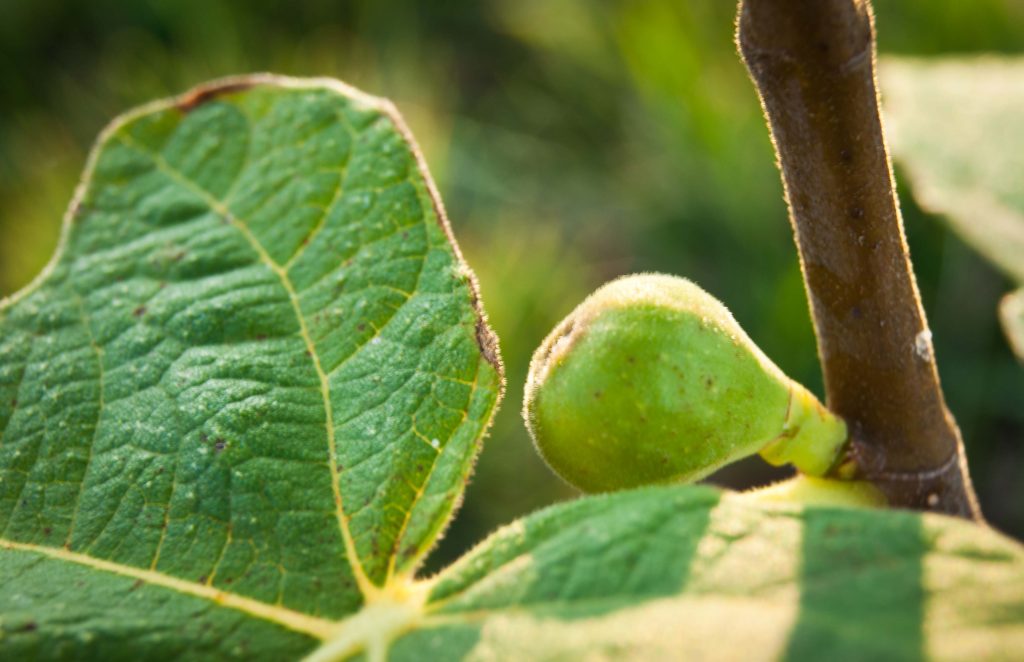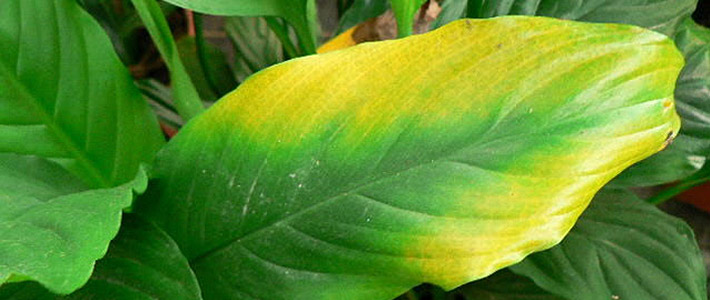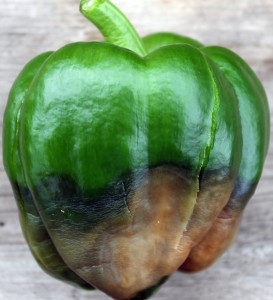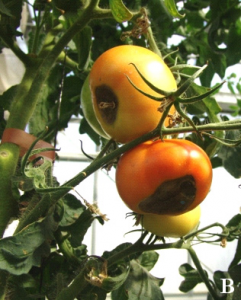There are many types of worms, but those that we commonly encounter in our... Read More
- Home >
- Calcium Nitrate Fertilizer – How to Use It on Your Plants
Calcium Nitrate Fertilizer – How to Use It on Your Plants

Even gardeners with the greenest thumbs need a little help sometimes. Calcium nitrate fertilizer is often a go-to choice of fertilizers to produce larger vegetables, strong plants, and faster growth. This soil or foliar additive can give your plants a boost and make them more productive while preventing some of the most common plant problems like blossom-end rot and rust spot. In some ways, calcium nitrate is a best-kept garden secret.
If you’ve never used calcium nitrate fertilizer and want to learn more, this article will walk you through what calcium nitrate fertilizer is, if it is right for your plants, and how to use it.
What Is Calcium Nitrate Fertilizer?
Calcium nitrate fertilizer is a water-soluble chemical solution that provides plants with supplemental calcium and nitrogen. These elements are the physiological building blocks for strong, disease-resistant plants.
Calcium nitrate doesn’t occur in nature — it’s made by mixing inorganic calcium and nitrogen. This is done by combining limestone and nitric acid, followed by ammonia. Calcium nitrate fertilizers are most often used by farmers for better crop production. However, this doesn’t mean the home gardener can’t or shouldn’t use calcium nitrate for their fruits, vegetables, and house plants.
How Do Calcium and Nitrogen Affect Plants?
Calcium provides structural strength to plants’ cell walls. This element also kicks in to help repair plants when they become injured or stressed. The plant’s vascular system will push calcium to the injured area to reinforce it and begin to repair the damage.
Nitrogen is a vital element for photosynthesis and plants’ amino acids. Without nitrogen, plants cannot process sunlight into sugars for growth.
Why Use Calcium Nitrate Fertilizer?
As a gardener, you know that dirt is your plant’s building block of life. Plants pull their nutrients from their soil, but when that soil lacks certain nutrients, plants develop deficiencies. These deficiencies can have a profoundly negative effect.
Calcium nitrate fertilizer acts as a remedy for certain plant deficiencies and diseases. Here are some of its most common uses:
For calcium-deficient plants
Calcium nitrate fertilizer can be used to prevent a calcium deficiency or replenish a plant’s calcium levels. The boost in calcium it provides helps improve leaf strength, fruit, and roots.
A calcium deficiency in plants is fairly easy to spot. When a plant suffers from a calcium deficiency, its new growth develops a curly appearance along the margins. This new growth also develops brown “chlorotic” spots and looks depleted. Other plant tissues soon begin to turn brown and these spots eventually widen and merge. Calcium-deficient plants often have dark brown leaf veins, as well. Once leaves turn brown from calcium deficiency, they are a lost cause. The plant, however, can be saved.
Additionally, calcium deficiencies hamper a plant’s fruit production. Because calcium creates strong cell walls, it is a fundamental ingredient for larger fruit that doesn’t split.
For nitrogen-deficient plants
Calcium nitrate will give plants a dose of usable nitrogen to improve energy production.
A nitrogen deficiency, like a calcium deficiency, can also prove fatal for plants if not treated in time. This is why nitrogen is one of the most common and abundant ingredients in fertilizers.
Unlike calcium deficiencies, nitrogen inadequacy affects a plant’s oldest foliage. These leaves are often the ones toward the bottom of a plant. When a plant doesn’t have enough nitrogen, leaves will begin to yellow or fade along their margins. If the plant is still producing new leaves, they will likely be tiny or appear shrunk.
Without enough nitrogen, a plant’s growth slows or even stops. This is because plants require nitrogen to produce energy through photosynthesis. In photosynthesis, plants use nitrogen to turn sunlight into energy.
For disease prevention
One of the main reasons why many gardeners treat their plants with calcium nitrate fertilizer is to protect their plants and crops from disease. Blossom end rot, cork spot, and bitter pits in apples can all be prevented or treated with the use of calcium nitrate fertilizer.
Blossom end rot is a common problem for tomato growers, which exhibits itself as damp spots on the underside of the fruit. Blossom end rot will cause a tomato to look unappealing and become inedible. As the fruit grows, it will become sunken and take on a tough, leathery look. It is usually caused by a lack of calcium availability and can be successfully treated with a calcium nitrate foliar spray. You can also treat your soil with a calcium nitrate fertilizer to help prevent blossom end rot from becoming a problem again next growing season.
Cork spot and bitter pits are problems affecting apples, and both can be caused by calcium deficiencies. Cork spot typically starts to show on apples in June and worsens as the summer goes on. The problem appears as discolored depressions on the fruit, and they can range in size. While they don’t affect the taste of the apple, they do interfere with its visual appeal. Bitter pit presents itself as pockmarks on the skin of the apples and causes brown spots on the flesh of the fruit.
Like cork spot, bitter pit makes the fruits look unappealing, but unlike cork spot, bitter pit does interfere with the taste. Apples with bitter pit will have a bitter flavor, and though they will still be perfectly safe to eat, you will probably want to avoid them. Both of these problems are associated with a lack of calcium and can be remedied with the use of calcium nitrate fertilizer (SF Gate).
For tomatoes
Tomatoes are often cited as the most common victims of calcium deficiency-induced blossom-end rot. Many home gardeners have gone out to check their newly developing tomatoes to find small brown spots that quickly spread and ruin their crop. Creating a calcium nitrate spray can prevent further blossom-end rot and help tomato plants recover from this disease.
Pros & Cons of Calcium Nitrate Fertilizer
| Pros: |
|
|---|---|
| Cons: |
|
How to Use Calcium Nitrate in the Garden
If you’re ready to take your tomatoes, peppers, eggplants, and other veggies to the next level with calcium nitrate fertilizer, then pay careful attention to how you mix and apply it. Here you can learn more about the process of preparing calcium nitrate fertilizer, applying it to plants, and storing your fertilizer.
Recommended application rate
To mix your own calcium nitrate fertilizer for the treatment of diseased plants, add four tablespoons of calcium nitrate salts to one gallon of water, and mix. To use calcium nitrate fertilizer as a disease preventative, or to balance out the nutrient levels in your plants, use one tablespoon of calcium nitrate to each gallon of water.
If you purchase granular calcium nitrate fertilizer, you can mix it into the soil. Alternatively, you may mix your granular calcium nitrate with water to feed your plants through root uptake or a foliar spray.
Mixing a Calcium Nitrate Spray. Your fertilizer packaging will likely come with instructions which take into account the concentration of your particular product. Follow those instructions carefully.
Even without instructions, the ratio and directions for creating a calcium nitrate spray from granules is simple:
- Mix two to four tablespoons of calcium nitrate to one gallon of water
- Shake well until most of the salt granules have dissolved
- Label your gallon to prevent confusion
- Pour enough to treat your plants into a spray bottle
- Store it at room temperature after use
One green thumb guideline is to apply one tablespoon of calcium nitrate to each moderately-sized plant you want to treat.
Calcium Nitrate Dressings. If you’re applying your fertilizer as a side dressing or top dressing, you will want to use .10 of a pound for every 10 feet of soil.
How to apply calcium nitrate fertilizer
There are three ways gardeners apply calcium nitrate to their plants: topically as a foliar spray, as a top dressing, or as a side dressing.
- Foliar Spray. This method is best for remediating blossom-end rot, bitter pit, and cork spot. First, remove affected fruits. Lightly spray the plant’s leaves and stems on an overcast day or toward evening when the temperatures are not as hot.
- Top Dressing. Mix your calcium nitrate fertilizer with topsoil. Spread a thin layer of this mix over the soil around your plant or where you plan to plant. Do not apply it directly to the stem or trunk.
Side Dressing. This is most often used when your plants are grown in a row formation. To side dress your plants, sprinkle an even layer about two to five inches away from the plants’ stems.
Frequently Asked Questions
Does calcium nitrate lower pH?
Overall, the risk of the soil becoming too alkaline from the typical use of calcium nitrate is low. While calcium nitrate does make soil less acidic (or more basic/alkaline), most ammoniated fertilizer forms are less likely to skew soil levels to the point of being too alkaline.
If you use the recommended amount of fertilizer or adhere to the ratio listed on your product packaging, then you should avoid the risk of over-application. Along with raising the soil’s pH, calcium nitrate allows the plant to uptake more nutrients, which can balance soil better in the long run.
When should I apply calcium nitrate to my plants?
The best time to spray calcium nitrate is after your plants have been watered well, avoiding the time when the sun is highest in the sky.
As a preventative measure for your fruits and veggies, apply a top dressing of calcium nitrate before planting.
After your plants begin to grow but before they produce fruit, do a second application. For this next application, side dress your plants with a weaker concentration of fertilizer. You can apply your calcium nitrate once or twice more during the growing season, based on your plants’ needs.
Keep an eye on plants that are struggling and apply your calcium nitrate foliar spray as needed.
How much calcium nitrate per liter of water should I add?
You will want to mix one tablespoon of calcium nitrate per liter of water. Be sure the calcium nitrate fully dissolves. Otherwise, discard the portion where sediment remains visible.
Related Content
-
Different Types of Earthworms with Pictures & Facts
-
What is Perlite? What is its use in the garden?
Have you ever used a bag of commercial potting soil? If so, you may have n... Read More
-
Fungus Gnats – How to Identify, Prevent, and Control Them
If you have spotted a small dark fly buzzing around your hydroponic garden... Read More
-
Coconut Coir – What It Is, Varieties, and How to Use It
The growing medium meets soil additive, coconut coir (or coco coir for sho... Read More






